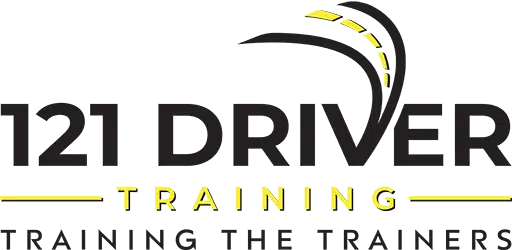Defensive driving is a critical skill set that can help prevent accidents, reduce risks, and keep new drivers and other road users safe. It encompasses a range of techniques designed to enable drivers to identify and react appropriately to potential hazards, make safer driving decisions, and ensure effective vehicle control. As a driving instructor, it is essential to make the teachings of defensive driving a central part of your curriculum. You hold a unique responsibility to impart this essential knowledge to your students, equipping them with the skills they need to maintain their own safety and contribute to a safer road environment for all.
121 Driver Training, as a TfNSW and ASQA-approved Registered Training Organisation, is a leading provider of Driving Instructor Courses that prioritise high-quality driver education, including defensive driving techniques. We understand that to foster responsible, confident, and safe drivers, it is imperative that instructors be well-versed in teaching defensive driving techniques.
In this blog post, we will discuss the significance of defensive driving and provide practical tips and insights from the expert educators at 121 Driver Training on how to teach these essential skills to your students. By incorporating these techniques into your lesson plans, you can ensure that your students become capable, safety-conscious drivers who are prepared to navigate various conditions and situations on the road. Empower your students through defensive driving teachings and contribute to creating a safer future for all road users.
1. Educating Students on Hazard Perception and Assessment
Effective defensive driving relies on a driver’s ability to recognise and anticipate potential hazards on the road. To help your students develop this crucial skill, consider the following teaching strategies:
– Encourage Constant Scanning: Teach students to consistently scan their surroundings, including the road ahead, alongside, and behind them, as well as checking mirrors regularly.
– Utilise Scenario-Based Exercises: Present hypothetical situations and discuss how to identify potential hazards, as well as appropriate reactions and preventive measures.
– Highlight Common Risky Situations: Discuss typical hazard scenarios, such as merging traffic, roadworks, pedestrian crossings, and adverse weather conditions.
2. Fostering Enhanced Situational Awareness
Situational awareness is the understanding of one’s environment, its immediate context, and the potential risks it presents. Developing this awareness in your students can significantly improve their defensive driving abilities. To facilitate this aspect of your instruction:
– Emphasise the Importance of Focus: Encourage students to eliminate distractions, such as mobile devices or loud music, to maintain full attention on the road and their surroundings.
– Teach Space Management: Instruct students to maintain a safe following distance, position themselves appropriately within traffic, and be aware of blind spots.
– Encourage Mental Preparedness: Discuss the importance of staying vigilant and being prepared to adapt to changing traffic conditions and unexpected situations.
3. Imparting Safe and Proactive Driving Behaviours
Defensive driving not only involves recognising and reacting to hazards but also adopting safe, proactive driving practices. Key behaviours to promote among your students include:
– Obeying Traffic Rules and Regulations: Reinforce the importance of adhering to speed limits, traffic signs, and road markings, explaining how these are designed to ensure safety for all road users.
– Practicing Appropriate Speed Management: Discuss the impact of speed on reaction time and stopping distances, emphasising the need for adjusting speed according to road conditions and surroundings.
– Prioritising Vehicle Maintenance: Highlight the significance of maintaining a well-functioning vehicle, including regular checks of tyres, brakes, lights, and fluid levels.
4. Teaching Collision-Avoidance Techniques
By following defensive driving principles, your students will be better equipped to avoid potential collisions. Consider these essential collision-avoidance strategies for your lessons:
– Responding Safely to Tailgaters: Instruct students to remain calm, maintain a safe speed, and increase their following distance to allow for greater reaction time and space.
– Safely Navigating Intersections: Teach your students to slow down, scan in all directions, and cautiously approach intersections equipped with traffic lights or stop signs, even when they have the right of way.
– Handling Potential Conflicts with Other Road Users: Encourage students to practice patience, empathy and courtesy on the road, even when faced with aggressive or inattentive drivers.
Conclusion
Incorporating defensive driving techniques into your instruction is imperative to ensuring your students become responsible, safety-conscious drivers. By focusing on hazard perception, situational awareness, proactive behaviours, and collision avoidance strategies, you can empower your learners to handle a variety of road conditions and challenges. Adopting these teaching principles will not only improve the effectiveness of your instruction but also contribute to creating a safer driving environment for everyone on the road.
At 121 Driver Training, we pride ourselves on delivering an exceptional driving instructor course in Australia that prioritises high-quality driver education, encompassing essential defensive driving techniques. Trust the expertise of our dedicated educators to provide you with the strategies, tools, and understanding you need to excel in your career as a driving instructor. Contact us today!




